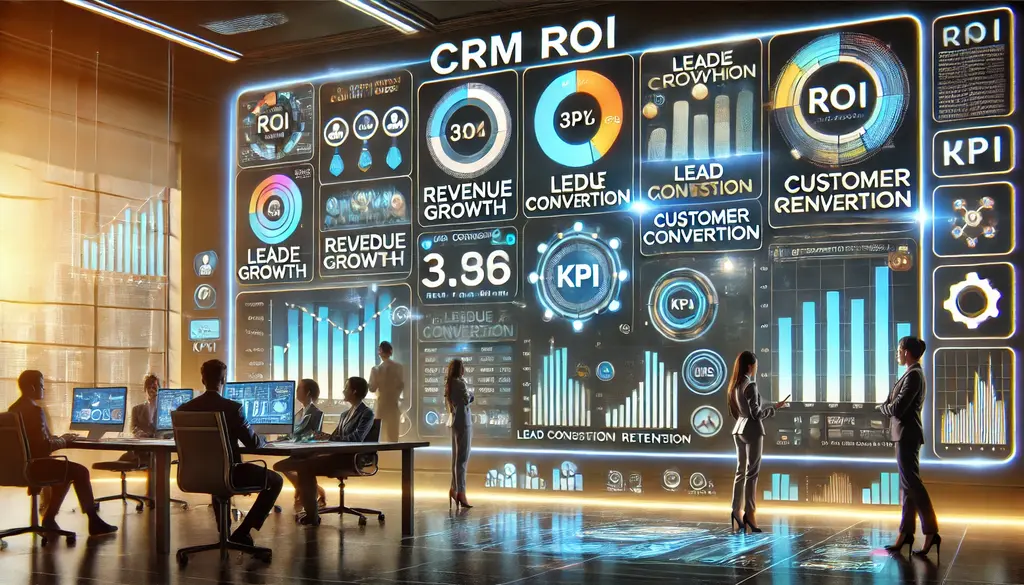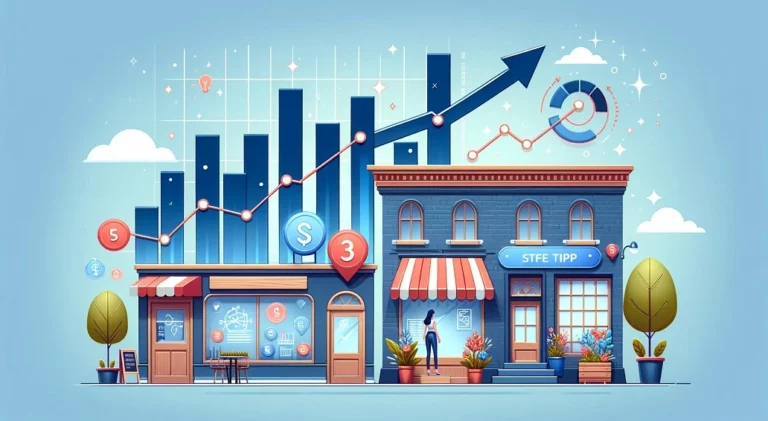Customer Relationship Management (CRM) systems have become vital tools for businesses aiming to streamline operations, strengthen customer relationships, and drive growth. Yet, investing in a CRM involves licensing fees, implementation, training, and maintenance costs.
Naturally, business owners, sales professionals, and tech enthusiasts want to know if the investment pays off. Measuring a CRM’s ROI answers that question by quantifying its financial impact.
This guide explains the process in detail, breaking it down into clear, actionable steps. Expect practical insights, relatable examples, and a thorough exploration of effectively evaluating CRM return on investment.
Why Measuring CRM ROI Matters
A CRM system promises to boost sales, improve customer retention, and enhance productivity. But promises alone don’t justify the expense. Calculating CRM ROI reveals whether those benefits translate into real dollars. Picture a small retail business spending $10,000 on a CRM. If it generates $50,000 in additional revenue, the return becomes evident. Without measurement, the value remains a guess.
Knowing the return on investment helps justify the cost, refine strategies, and secure buy-in from stakeholders. It turns vague benefits into concrete numbers, guiding smarter decisions.
Beyond financial clarity, measuring CRM ROI uncovers operational strengths and weaknesses. It shows where the system excels—perhaps in shortening sales cycles—or where it falls short, like underused features. This understanding drives continuous improvement, ensuring the CRM delivers maximum value over time.
Defining CRM ROI: The Basics
CRM ROI is the return on investment from a Customer Relationship Management system. It compares the CRM’s financial gains to its total cost. The result, typically expressed as a percentage, indicates profitability. A positive ROI means the system generates more revenue than it costs. A negative ROI signals a loss, prompting a reassessment.
The basic formula looks straightforward:
CRM ROI = (Gains from CRM – Cost of CRM) ÷ Cost of CRM × 100
For example, if a business spends $5,000 on a CRM and earns $15,000 in additional profit, the calculation becomes:
($15,000 – $5,000) ÷ $5,000 × 100 = 200%.
This 200% ROI means the CRM delivers twice its cost in value. Simple, right? Not quite. The challenge lies in accurately identifying those gains and costs.
Breaking Down the Costs of a CRM
Costs form the foundation of any ROI calculation. Underestimating them skews the results. CRM expenses fall into several categories, each requiring careful tracking.
Software licensing tops the list. Most CRMs operate on a subscription model, charging per user per month. A team of 10 paying $50 monthly totals $6,000 annually. One-time purchases exist but are less common. Implementation follows, covering setup, data migration, and customization.
Depending on complexity, a mid-sized firm might spend $2,000 to $10,000 here. Training ensures that staff use the system effectively. Budgeting $1,000 for workshops or online courses proves typical for small teams.
Ongoing maintenance includes updates, technical support, and occasional fixes. This might add $500 to $2,000 yearly. Hidden costs also sneak in—think time spent learning the system or integrating it with existing tools like email platforms. Adding these up provides the denominator for the ROI formula. Precision here sets the stage for accurate measurement.
Identifying Gains from a CRM
Gains represent the revenue or savings a CRM generates. Pinpointing them requires looking at tangible outcomes across sales, customer retention, and efficiency. Start with increased sales revenue. A CRM often shortens sales cycles by organizing leads and automating follow-ups. Suppose a sales team closes 20 more deals annually, each worth $1,000. That’s $20,000 in direct gains.
Customer retention offers another source. Retaining customers costs less than acquiring new ones. If a CRM reduces churn by 5%, keeping 10 customers who spend $2,000 yearly, that’s $20,000 saved. Efficiency gains matter, too.
Automating reports might save 10 hours monthly. At $30 per hour, that’s $3,600 annually. These examples—sales boosts, retention improvements, and time savings—form the “gains” in the ROI equation. Tracking them demands baseline data from before the CRM’s adoption.
Establishing a Pre-CRM Baseline
Measuring CRM ROI hinges on comparing performance before and after implementation. Without a baseline, gains remain speculative. Look at key metrics from the pre-CRM era. Sales figures provide a starting point. How many deals are closed monthly? What was the average deal size? Customer retention rates matter, too—calculate the percentage of repeat buyers over a year.
Efficiency metrics, like time spent on manual tasks, reveal the picture. A sales manager might have spent 15 hours weekly on spreadsheets. Gathering this data takes effort, especially for businesses reliant on paper records or scattered files. Yet, it’s worth it. Comparing these numbers to post-CRM results reveals the system’s true impact.
Key Metrics to Track for CRM ROI
Specific metrics tie CRM performance to financial outcomes. Focusing on these sharpens the ROI calculation. Sales growth stands out. Track the number of closed deals and their value post-CRM. A 10% increase signals success. Lead conversion rates show how effectively leads turn into customers. CRM will likely deserve credit if the rate jumps from 15% to 20%.
Customer lifetime value (CLV) reflects long-term revenue per customer. A CRM boosting CLV from $5,000 to $6,000 adds $1,000 per retained customer. Retention rate measures loyalty. A rise from 80% to 85% means fewer losses. Productivity metrics, like time saved on tasks, translate into cost savings. Monitoring these ensures the ROI reflects real-world benefits.
Step-by-Step Guide to Measuring CRM ROI
Calculating CRM’s return on investment follows a logical sequence. Each step builds on the last, ensuring accuracy.
Step 1: Calculate Total Costs
Sum all expenses—licensing, implementation, training, and maintenance. A small business might tally $8,000 for the first year. Include indirect costs like staff time if significant.
Step 2: Measure Pre-CRM Performance
Collect baseline data. Sales totaled $100,000 annually. Retention stood at 75%. Manual tasks consumed 20 hours weekly.
Step 3: Track Post-CRM Performance
After six months, sales hit $120,000. Retention climbed to 80%. Task time dropped to 10 hours weekly. Record these shifts.
Step 4: Quantify Gains
Assign dollar values. Sales increased by $20,000. Retention gains saved $10,000 (five customers at $2,000 each). Time savings added $1,800 (10 hours at $30/hour)—total gains: $31,800.
Step 5: Apply the ROI Formula
Plug numbers in: ($31,800 – $8,000) ÷ $8,000 × 100 = 297.5%. The CRM yields nearly triple its cost.
This process, applied consistently, delivers a clear picture of value. Adjust the monthly, quarterly, or yearly timeline based on business needs.
Tools and Features That Enhance ROI Tracking
Modern CRM offers built-in analytics to simplify ROI measurement. Dashboards display real-time sales trends, conversion rates, and customer retention. Integration with accounting software ties revenue directly to CRM activity. Automated reports save time, delivering insights without manual crunching.
AI-powered features predict future gains, like identifying high-value leads. Custom fields track specific metrics unique to the business. For example, a retail CRM might monitor repeat purchase frequency, while a service firm tracks call resolution times. Leveraging these tools streamlines the process, making ROI clear and actionable.
Maximizing CRM ROI Over Time
Measuring ROI isn’t a one-off task. Regular evaluation keeps the system aligned with goals. Review metrics quarterly to spot trends. A dip in conversion rates might signal training needs. A sales surge could justify scaling features. Adjust strategies based on findings—tweak workflows, refine lead scoring, or integrate new tools.
User adoption drives value. A CRM sitting idle wastes money. Encourage staff with incentives or gamified dashboards showing their progress. Clean data ensures accuracy: duplicate records or outdated contacts muddy results. Periodic audits maintain quality, boosting ROI reliability.
The Long-Term Value of CRM ROI Measurement
Beyond immediate returns, consistent ROI tracking shapes long-term success. It reveals how CRM evolves with the business. Early gains stem from efficiency, while later ones reflect deeper customer insights. This perspective guides reinvestment—upgrading to advanced features or expanding user licenses.
It also builds a case for future tech investments. A proven 300% ROI on a CRM paves the way for AI tools or marketing platforms. Over time, the practice fosters a data-driven culture, where decisions rest on evidence, not hunches. That’s the ultimate payoff: a business that thrives on clarity.
Conclusion
Measuring CRM ROI transforms a costly tool into a proven asset. By tallying costs, quantifying gains, and tracking key metrics, businesses gain a precise view of value. The process demands effort—baseline data, consistent monitoring, and honest analysis—but the rewards outweigh the work. Sales climb, customers stay, and efficiency soars. Whether a small startup or a growing firm, mastering CRM return on investment unlocks growth potential. Start today. The numbers don’t lie.
FAQs
What does CRM ROI mean?
CRM ROI measures the financial return from a Customer Relationship Management system compared to its cost. It’s expressed as a percentage, showing profitability.
Why is a baseline important for calculating CRM ROI?
A baseline establishes pre-CRM performance. Comparing it to post-CRM results highlights actual gains, ensuring accurate measurement.
Which metrics best indicate CRM success?
Sales growth, lead conversion rates, customer retention, and time savings stand out. They are tied directly to revenue and efficiency.
How often should CRM ROI be measured?
Quarterly reviews work well for most businesses. Frequent checks catch trends early, allowing timely adjustments.
What if the CRM shows a negative ROI?
A negative ROI suggests that the costs exceed the gains. Investigate adoption issues, data quality, or misaligned features, then refine the approach.








